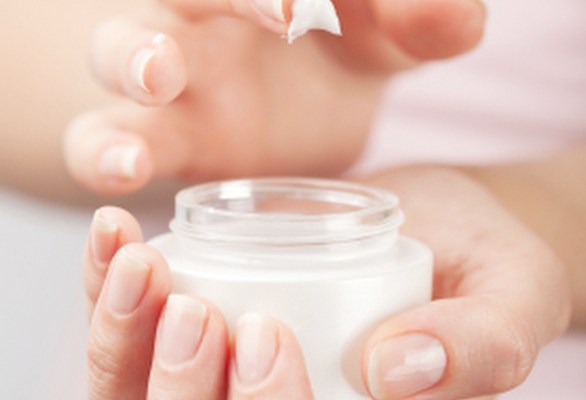
The origins of perfumery, the art of making perfumes can be found in historical Egyptian culture. Perfume should be like your personal signature. The scent you put on your body should reflect your taste and personality. In our busy daily lives, we meet several people and perfume is something that leaves our mark on them and stays in their minds even when we are gone. It’s like the first impression you can make on others and it has to be the best impression. Currently, the world of cosmetics is flooded with many perfume brands. I still remember 15 year old me heading to the local drugstore, being dragged to ‘Try me!!’ perfume bottles sat on the shelf, sniffing and spraying each scent one by one onto my wrists and elbows to select my signature scent. Fast forward 9 years, I’m 24 today and my knowledge of natural health and wonder has grown with me. Synthetic fragrances contain many toxic ingredients such as benzene, aldehydes, phenols, phthalates and parabens. They can cause cancer, nervous disorders, birth defects and hormonal effects. Antiperspirants and deodorants contain aluminum as a key ingredient because aluminum can temporarily clog sweat pores and thereby regulate sweat flow. Unfortunately, that’s how antiperspirants work!! They mess with the natural process of sweat production! Moreover, they produce estrogen-like effects in our body. Research has shown that increased estrogen production increases the risk of breast cancer. Parabens also accumulate in breast cells and mimic the effects of estrogen. Our skin absorbs 60-70% of the topical products we use and for the underarms, the absorption percentage is even more. The nicks that form during shaving result in extra absorption of these chemicals.
I noticed that I never really loved those artificial, synthetic fragrances and my heart yearned for something near nature, something that connects me to Mother Earth and something that adds personality to me. The hunt to satisfy my need for natural, non-toxic perfumes and deodorants led me to the fascinating and astonishing world of essential oils. Now that I’ve convinced you to seek natural alternatives to your typical collection by telling the synthetic fragrance horror story, I want to provide you with a basic idea on how to prepare your own perfume concoction. Essential oils when put in perfume not only make you smell good but also provide health benefits when inhaled. So get ready to kill two birds with one stone!!!
For all the DIY freaks out there, this is for you!!
The things we need to make DIY perfume are:
- Sterilized blue or yellow glass container
- Base (can be alcohol or carrier oil)
- Essential oil for your choice
First, start with the base. If you want to go for an alcohol base, you can use organic grapeseed alcohol or 100% absolute vodka. If you want to use a carrier oil as a base, jojoba oil could be your best bet as this miracle oil has great preserving properties and can hold the scent of the essential oil for a longer time. Now let’s get to the fun part!! Namely choosing and mixing essential oils. First, visualize your perfume and make a decision what feeling you want your perfume to convey about you. Femininity, fun, freshness – which do you like to exercise? Do you prefer floral scents or woody scents or beachy scents? Scents like rose and jasmine give a feminine touch while notes of citrus, woods, spices and herbs give a masculine touch (meaning it’s deep and warm, not only men can use it).
Essential oils can be divided into three notes – Top Notes, Middle Notes and Base Notes. The top notes are the most visible notes in a perfume. They create the first impression of perfume and fade in 10-15 minutes. Middle notes, also known as heart notes, give dimension to a perfume. They act right before the top notes start to fade and last for about 30-45 minutes. The base notes stay on your body for a longer period of time and stop the top and middle notes from evaporating too quickly. This scent softens with time and it’s the last thing you smell before your perfume entirely fades. It brings together the top and middle notes. Oils such as Cedar Wood, Rosemary, Eucalyptus, Basil, Lemon, Clary Sage and Tea Tree form the top notes. Oils such as Jasmine, Ginger Lavender, Cardamom Ylang Ylang, Rose, Peppermint, Juniper, Chamomile and Black Pepper form the middle notes. Oils like Neroli, Frankincense, Sandalwood, Cinnamon, Patchouli and Vanilla form the base notes. Your essential oil can comprise anywhere between 15-30% perfume. 1 ml is equal to 20 drops. For a straightforward calculation, convert the amount of essential oil and base you want to add in drops and shake your favourite scent!!
If you are not the perfume-loving type of person who likes solid deodorant sticks, ladies! I understand too!! My recipe for DIY natural deodorant is:
- 3 tbsp coconut oil
- 3 tbsp baking soda
- 2 tablespoons of shea butter
- 2 tablespoons of arrowroot powder
- 1/2 tbsp bentonite clay (use a plastic storage container if you added bentonite clay)
- 1 tablespoon of beeswax
- 1 tablespoon of vitamin e oil
- 5 – 10 drops of essential oil of your choice (lavender and eucalyptus are my favorites)
Warning: Always do a skin patch test before experimenting with any essential oil as it’s highly concentrated.











